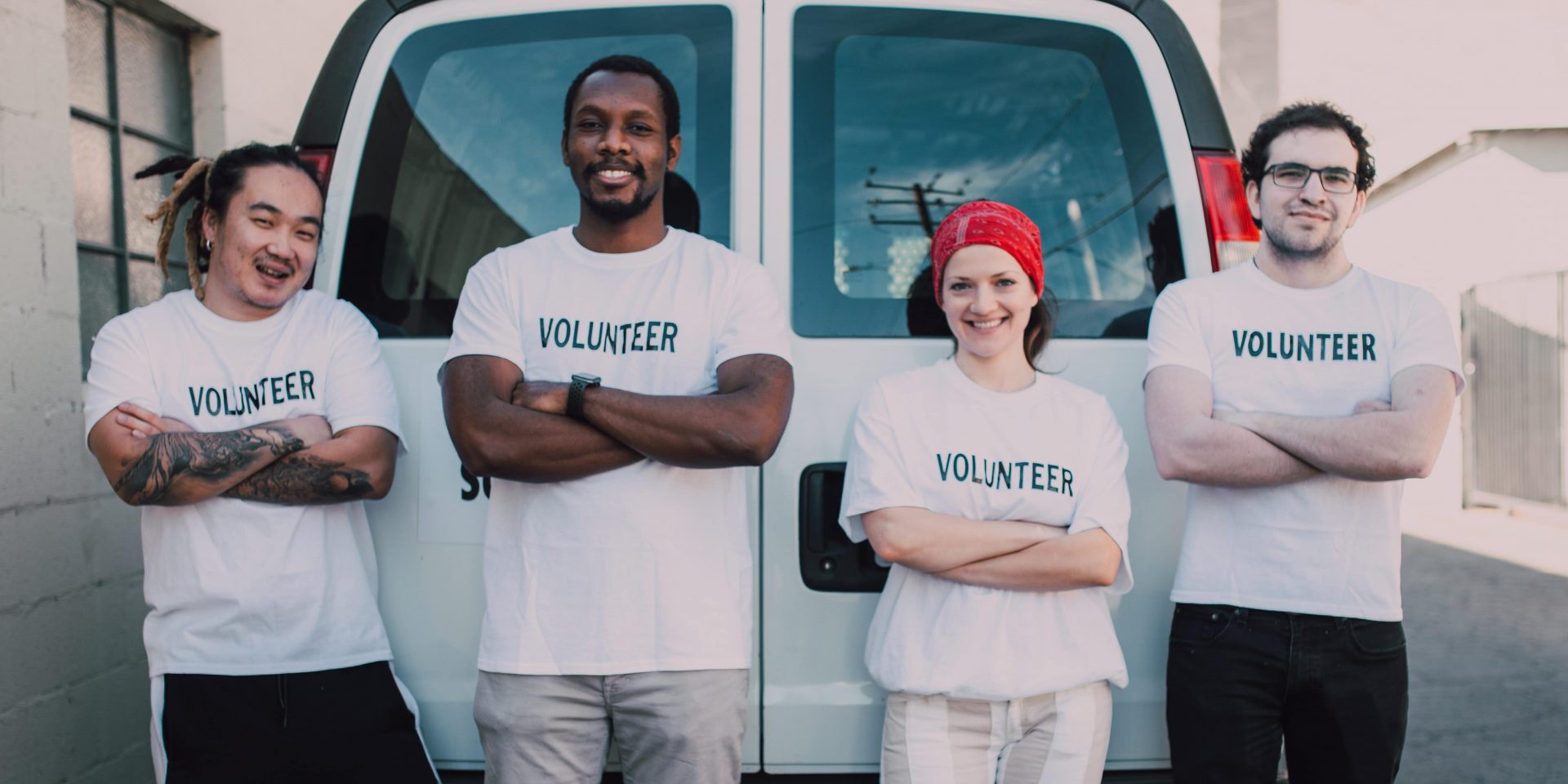Pledge 1%: You’ve taken the pledge, now what?
First of all, committing to Pledge 1% is fantastic!
You’ve built up internal buy-in, and your team has signed up! You’ve decided to pledge some combination of the four; 1% of time, 1% of profit, 1% of product, or 1% of equity. But what happens now?
There are so many benefits of a corporate philanthropy program, including:
- You and your team get to make an impact!!
- Your team gets to enjoy helping others and witnessing their impact!!
- Your team works with purpose supporting the causes you all care about!!
We love this part, and it truly sounds great because it is great!
Yet, we understand if your team is newer to the corporate philanthropy program concept. Everyone starts somewhere, and it’s important to simply begin. If you and your team don’t know which causes to support, that’s ok. Or perhaps your team has supported one nonprofit since the founder started the company, and you now want to expand that. Great!
After your team pledges, it’s time to build a plan, or a strategy, or a roadmap on how you hope to fulfill your pledge. In that plan, maybe even include how you’d like to involve your employees in your pledge. Also, remember to celebrate the milestone of the commitment! If you can’t tell, we love that.
We’ll quickly review the basics of a corporate giving program and then focus on looking for great ways to involve your employees in the pledge and involve the pledge in your brand image as a company — everything from creating group volunteer activities as a company, to donating cans of kombucha for JDRF and healthcare workers, to producing an annual social impact report.
First Steps After Making the Pledge
When signing up for the pledge, Pledge 1% offers a phone call with a consultant. This phone call is a great starting point. In addition to that chat, it’s helpful to find a few additional resources. We have a few highlights to consider when creating your program, from our blog linked at the bottom of the page (which includes the 7 types of corporate philanthropy), or this free PDF that you can look at here. You don’t even need an email address 🙂
On that PDF, we suggest a few ways to start a Corporate Giving & Volunteer Program. We call it designing your program. Here’s a little summary of that PDF:
- Get Leadership Support
- Create an Employee Giving Committee
- Survey Employees
- Find Nonprofit Partners for Volunteering
- More Choice = More Participation
- Consider Creating Monthly or Quarterly Themes
These are all great things to consider when creating your program and designing your pledge (aka, workplace giving, corporate philanthropy, etc). In our opinion, if you’re going to pledge, let’s involve all of your employees! Employees want purpose in the workplace, and who wouldn’t?! Helping others can give you an awesome feeling. We’ve all heard the saying: the gift is in the giving.
The Specifics of Employee Engagement within Pledge 1%
What may not be as easy to think through is how to involve employees in your pledge. It may seem like an enormous task regardless of how many employees you have. You may be the only People or Culture Leader within your team, or you could have 500+ employees in 10+ locations! Do you want some tips on how to involve everyone in your pledge? Pledge 1% even recommends adding a software to help when your team grows beyond 50 employees!
Remember to start simple.
With leadership’s support, the first step could be to involve a small number of employees in a community giving and volunteering committee. This is a great first step that is free and gives employees a voice in the program. This employee group could help decide the direction of your program. This group could even choose to survey the rest of the employees to find specific nonprofits to support. For example, we have seen an employee resource group (ERG) tasked with deciding where the 1% of profit goes each month. This is a great way to involve employees that is easier to implement.
A second step would be to have this team think through group volunteer activities with local nonprofits.
A third step, if the team is able, would be to offer all employees a standard benefit, such as:
- Eight Hours of Volunteer Time Off
- $25 in a Volunteer Grant
- $100 of Matching Donations
Perhaps your team is not quite ready to offer these benefits. That’s no problem, especially for many companies that may not be making a profit.
Give what you can, perhaps focus on In-Kind Donations!
If you are not making a profit yet, you may not allow your employees paid time off to go volunteer. We understand that too! This could be the case for people who’ve started a new company, are in the early stages of a new business, or are in a particular industry which makes it challenging to pay for team members to go volunteer.
For those in this category, consider the product or service you offer. Could you give that as a discounted product or service, or perhaps give away a select number of items for free? Involve your employees in choosing the organizations to give.
Take our friends at Circlebev.com, for example. As they grew, they wanted to focus on giving back. In their earlier days, they simply donated their product and provided discounts to nonprofit events. Now they are sustainable and giving 2%+ of their profit with specific products they highlight!
Creating an Annual Social Impact Report
The last aspect of a successful Pledge 1% launch would be the Social Impact Report! This is a great way to bring your employees together each year and share the cumulative impact you all have made.
Our society is often so busy that we forget to celebrate all of the good we have done! When you and your team see the aggregate impact in volunteer hours, in profits donated, in products given, it’s incredible! Not to mention the fact that according to the Satell Institute Study: Businesses with a commitment to CSR & increased Employee Engagement could see turnover reductions by up to 50%.
Seeing these numbers and remembering the events is awesome to see each year as a company. Not to mention how your employees will feel toward your company. Selfless employees are awesome employees!
As you put together your pledge, you will be thankful. Your brand can stand out as a leader in your community and industry through corporate giving. This will allow your team to live and work in better alignment with your values and build employee and customer loyalty that will sustain your business long-term.
Remember, you’ll be joining a great group of companies that have already taken the pledge — https://pledge1percent.org/pledged/.
Feel free to chat with us at Selflessly if you have any additional questions: [email protected]
Previous Articles to Reference
As a note, we published a previous post about the background of Pledge 1%. This article answers the question, “What is Pledge 1%?” and explains the different forms of corporate giving within Pledge 1% — time, product, profit, and equity — while also talking about the movement’s founders! We also expand on what happens after your team has decided to take the pledge in this article.
All it takes is an average of five minutes per day/employee to give back one 1% of your workweek. If we all did this collectively, that would be incredible! Let’s encourage each other 🙂
In addition, are you still wondering “What are the different forms of corporate giving?” Here are the 7 types of corporate philanthropy to kickstart some company philanthropy ideas:
- Matching Gifts
- Volunteer Grants
- Volunteer time off
- Annual Grant Stipends
- Community Grants
- Group Volunteering (Days of Service)
- In-Kind Donations (Pro Bono Services or Product Donation)




